December 16, 2022
In the spring of 2014, on the 25th anniversary of the 1989 Tiananmen Protests, I began a project of live-tweeting the events and images of the protests and crackdown, day by day, moment by moment. The tweets that followed, over the next month and half, provide an interesting sense of how events ebbed and flowed over that period, ultimately leading to their tragic conclusion. They also provide useful context for many of the images I had often seen out of context. My tweets soon attracted some media attention and popular interests. However, this was prior to Twitter enabling tweets to be linked together in threads, which makes it difficult to access them today. So have recompiled them all here in a way that, while not in real time, hopefully recreates the narrative they were originally meant to convey.
Part 1: The Protests Begin (April 15 – May 4)
On April 15, 1989, the former General Secretary of China’s Communist Party, who oversaw a number of early reforms in the 1980s, and had been forced to resign in 1987 after refusing to crack down on a small group of dissident intellectuals, died in Beijing after suffering a heart attack, at the age of 73. His last words were reportedly that he wished to be buried simply, without extravagance, in his hometown.
April 16, 1989 – Students lay wreath in Tiananmen Square to honor death of reformer Hu Yaobang.
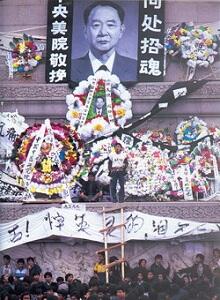
April 17, 1989 – Six students from CUPSL place memorial wreath to Hu Yaobang at foot of Monument to People’s Heroes.
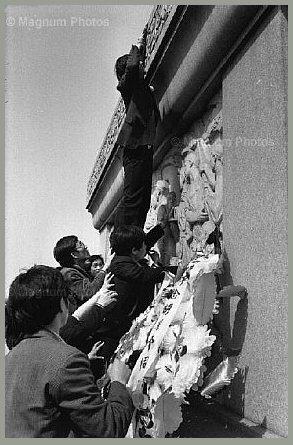
April 17, 1989 – Student in Beijing holds placard memorializing reformer Hu Yaobang.
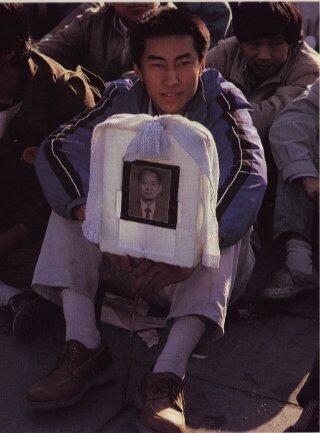
April 17, 1989 – Students on their way to Tiananmen Square.
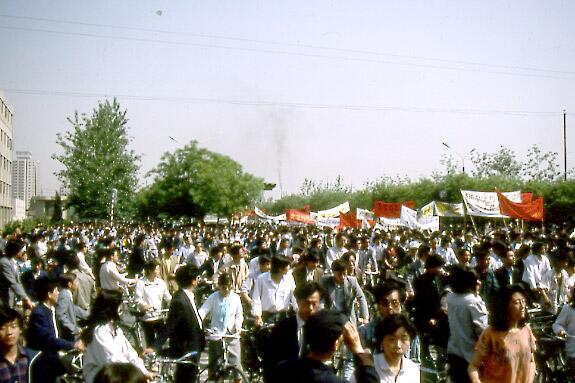
April 18, 1989 – Large crowds gather in Tiananmen Square to hear students give speeches outlining “Seven Demands”.
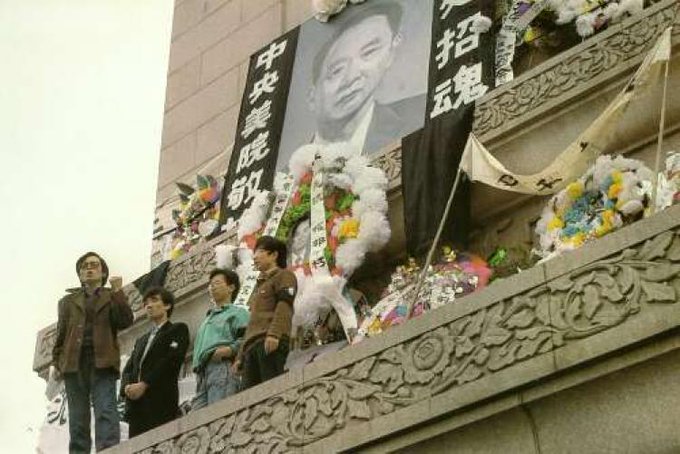
April 18, 1989 – Students begin posting pro-democracy posters on university campuses in Beijing.
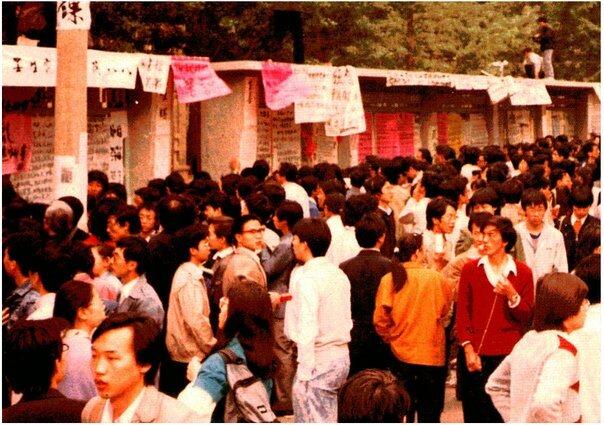
April 19, 1989 – Students continue gathering in Tiananmen Square, shouting slogans such as “Down with Dictatorship”.
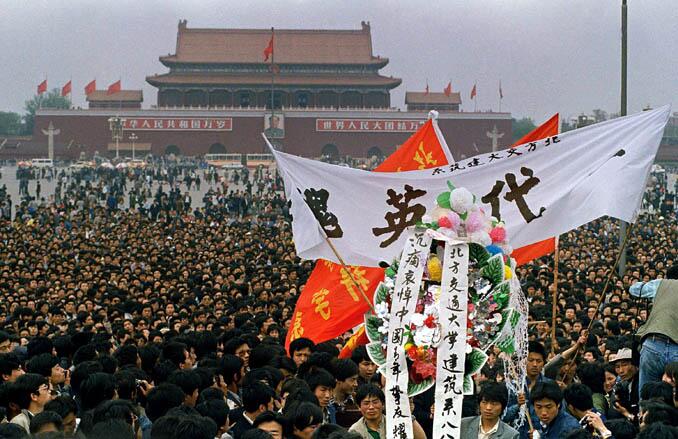
April 19, 1989 – Students stage evening sit-in at main gate to Zhongnanhai, shouting “Li Peng come out!”
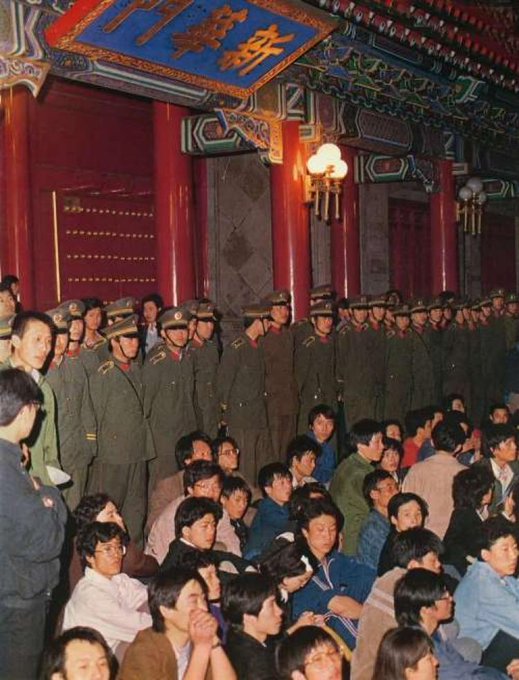
April 20, 1989 – Woman pleads w/ students to end sit-in at Zhongnanhai. At 5am, police break up gathering w/ batons.
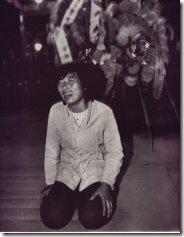
April 20, 1989 – Student leader Wu’er Kaixi, on break-up of Zhongnanhai sit-in: “The police beat all of us, including me, but I hit back.”
April 20, 1989 – Students again march to Tiananmen Square. With tensions high, a few are beaten severely by police.
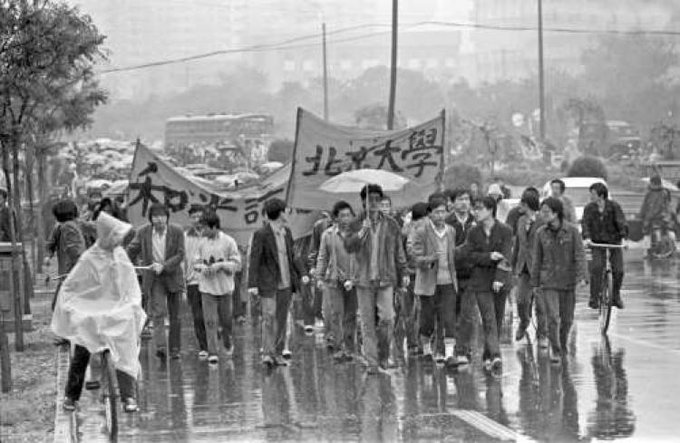
April 21, 1989 – Crowds gather in Tiananmen Square to hear speeches, the final day before Hu Yaobang’s funeral.
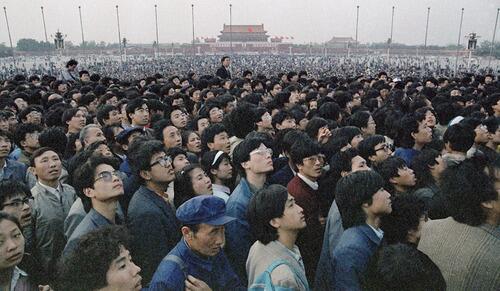
April 21, 1989 – Students march to Tiananmen Square, chanting “What are we doing? We are telling the truth.”
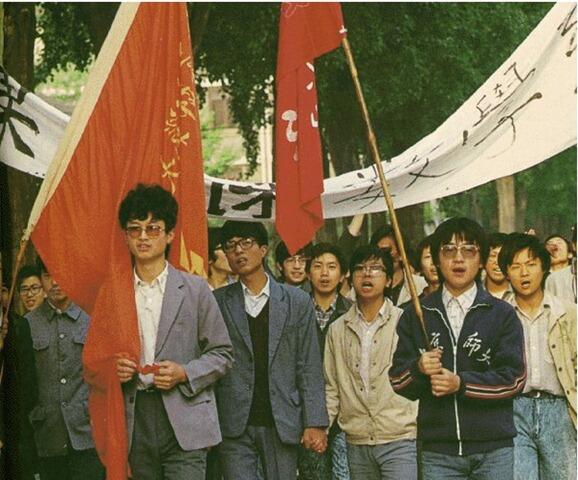
April 21, 1989 – Students occupy Tiananmen Square all night to prevent its planned closure for Hu Yaobang’s funeral.
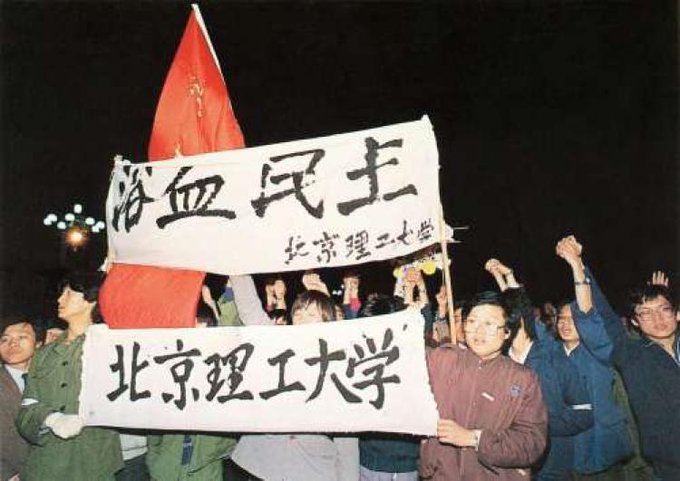
April 21, 1989 – Wang Zhen: “These students are in rebellion…They have attacked Xinhua gate. We’ve got to do something right away.”
April 21, 1989 – Peng Zhen: “There must be some ‘Black Hands’ behind these students, so we’d better get to the bottom of things.”
April 21, 1989 – Li Peng: “This protest in Beijing and other cities around the country is getting worse. We need a Politburo meeting!”
April 21, 1989 – Zhao Ziyang: “The majority of the students love the Party and the country. The student mainstream is good.”
April 21, 1989 – Peng Zhen: “With Beijing in chaos like this we’ve got to guard against a second Cultural Revolution.”
April 22, 1989 – Students occupy Tiananmen Square all night to prevent its planned closure for Hu Yaobang’s funeral.
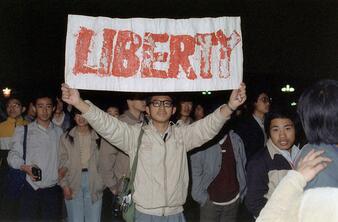
April 22, 1989 – Dawn breaks on crowd of over 100,000 gathered in Tiananmen Square for Hu Yaobang’s funeral.
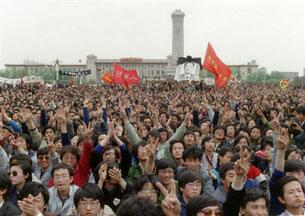
April 22, 1989 – Students gathered in center of Tiananmen Square for funeral of Hu Yaobang
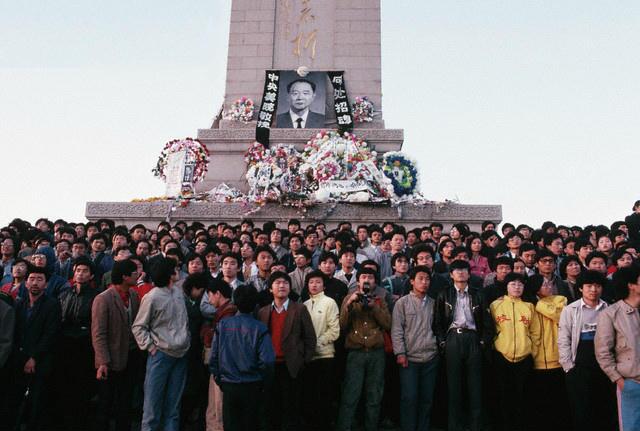
April 22, 1989 – Unable to close Tiananmen Square as planned, police cordon off entrance to Great Hall of the People.
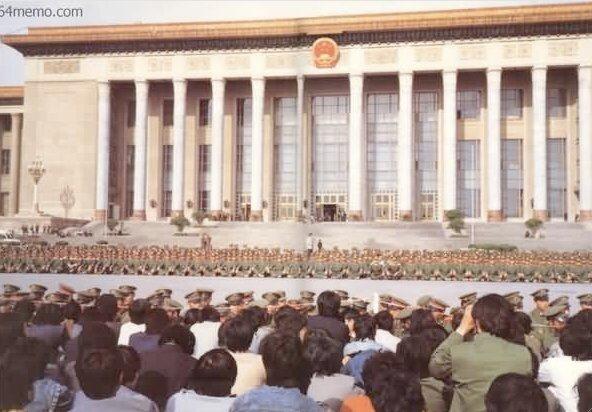
April 22, 1989 – Students awaiting Hu Yaobang funeral contained by police cordon in front of Great Hall of the People.
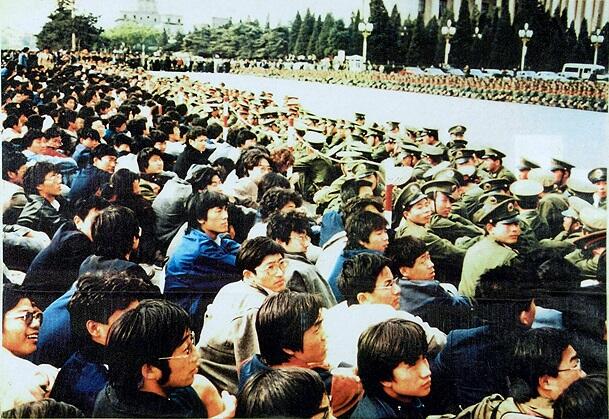
April 22, 1989 – Deng and Party leaders must enter Great Hall of the People via back entrance to attend Hu’s funeral.
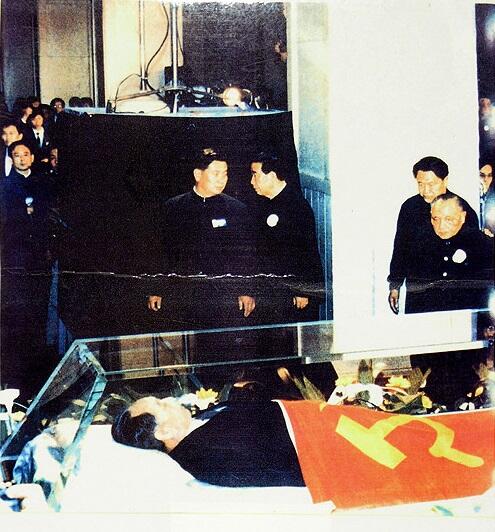
April 22, 1989 – Zhao Ziyang, Deng Xiaoping and Li Peng at Hu Yaobang’s memorial service in the Great Hall of the People.
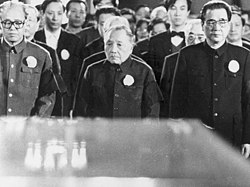
April 22, 1989 – Crowd outside in Tiananmen Square listening to Hu Yaobang’s funeral by loudspeaker.
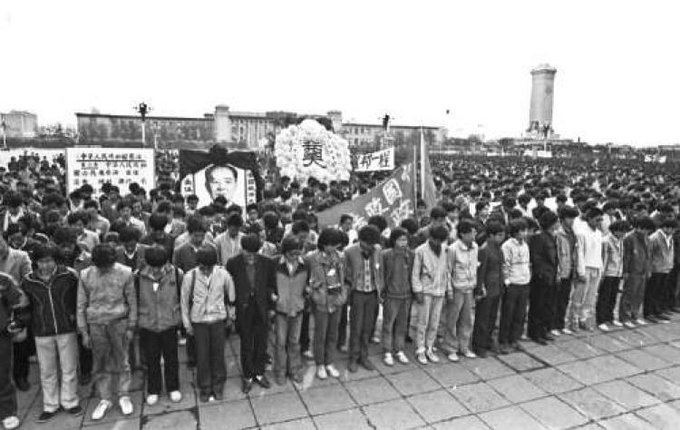
April 22, 1989 – Protestors sit face to face with police cordon in front of Great Hall of the People.
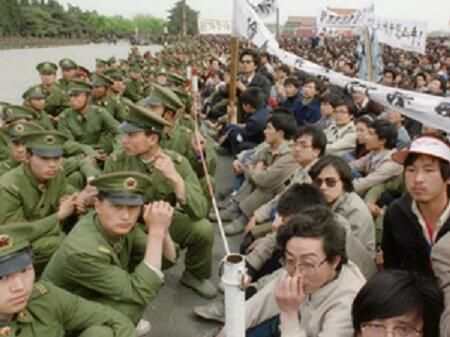
April 22, 1989 – Finale: 3 students climb steps to Great Hall of the People to present petition of “Seven Demands”.
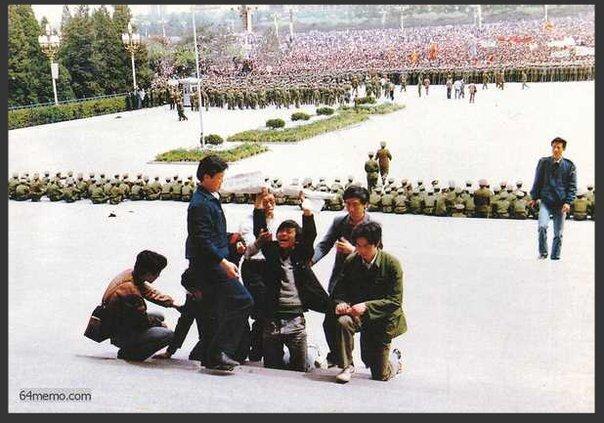
April 22, 1989 – The three students remain kneeling for 45 minutes. No one comes out to receive their petition.
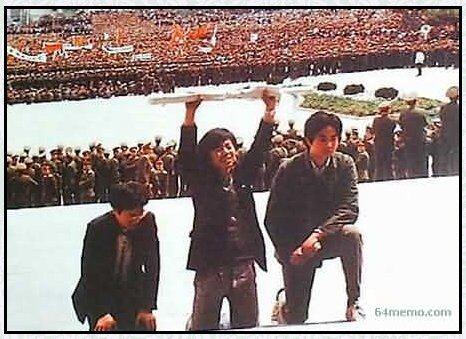
April 22, 1989 – After funeral is finished, students begin chanting “Dialogue! Li Peng come out!” Party leaders leave through back exit.
April 22, 1989 – Near dusk, serious rioting breaks out in Changsha and Xi’an. Cars destroyed, shops burned and looted. 350 are arrested.
April 23, 1989 – Party chief Zhao Ziyang (right) departs Beijing for visit to North Korea. His absence will prove fateful.
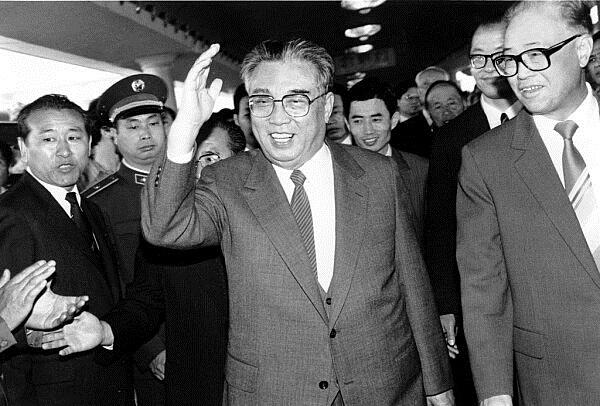
April 23, 1989 – Students from 21 Beijing universities gather at Old Summer Palace to elect protest committee leaders.
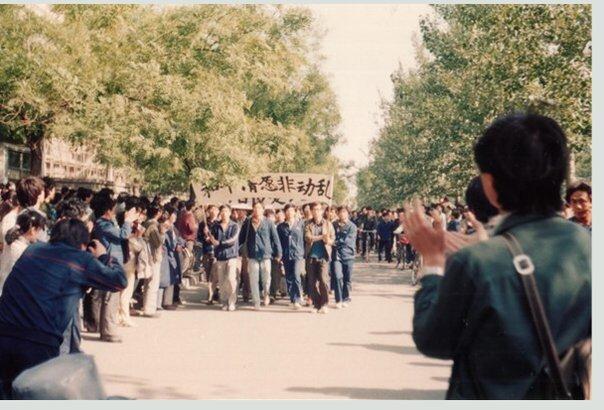
April 23, 1989 – Student protest leaders declare boycott of all classes, and call for Premier Li Peng to resign.
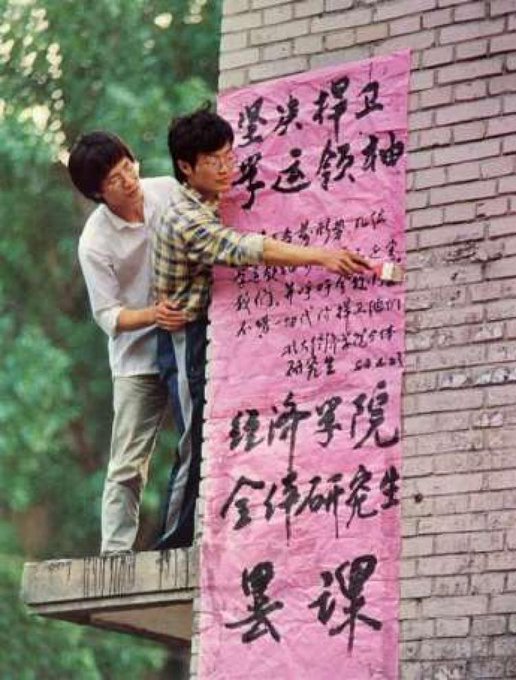
April 23, 1989 – More than 10,000 students protest in Tianjin, marching four abreast in a column. stretching over a mile.
April 23, 1989 – New York Times: “Violent Protests Reported in China”; 130 police hurt, 20 houses burned in Xi’an. http://nytimes.com/1989/04/23/world/violent-protests-reported-in-china.html…
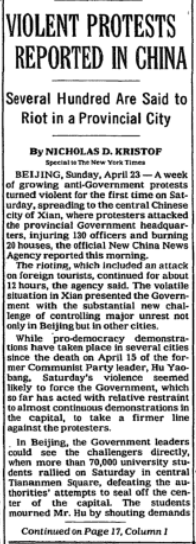
April 24, 1989 – Peking University students hold large pro-democracy rally at “May Fourth Square” on campus.
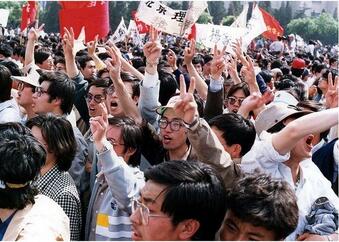
April 24, 1989 – Deng Xiaoping gives speech before Beijing’s mayor, warning of turmoil and urging crackdown on protests.
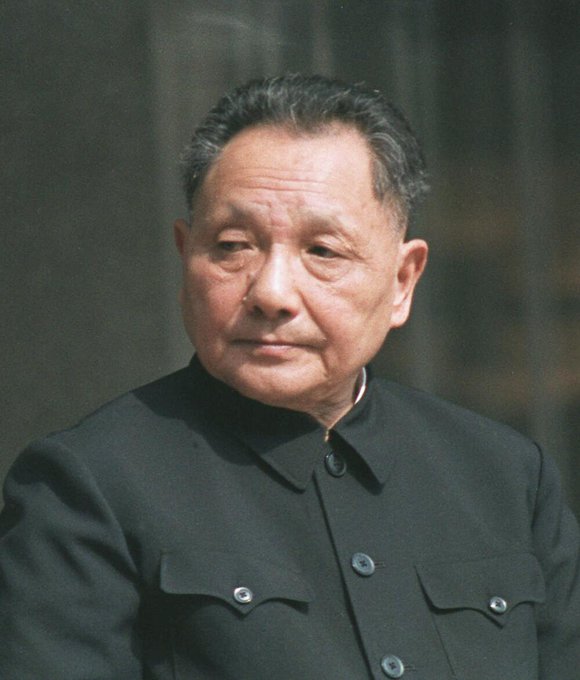
April 24, 1989 – Deng Xiaoping: “This is not an ordinary student movement, this is turmoil.”
April 24, 1989 – Deng Xiaoping: “Their aim is to overthrow the Communist government and to make the future bleak for China.”
April 24, 1989 – Deng: “We should not be afraid of international reaction. There can only be true democracy when China is developed and modernized.”
April 24, 1989 – Deng: “This turmoil is a planned conspiracy. These people want to destroy China’s bright future.”
April 24, 1989 – Deng Xiaoping: “If they succeed, all the work we have done toward reform will come to a halt, almost overnight.”
April 24, 1989 – Deng Xiaoping: “[Hu Yaobang] was weak and yielded to the bourgeois liberal trend. His economic policies were also wrong.”
April 24, 1989 – Deng Xiaoping: “The more the Poles gave in, the greater their turmoil became…and there is Solidarity.”
April 24, 1989 – Students at several Beijing universities take over campus radio stations and begin broadcasting speeches and information.
April 25, 1989 – Copies of Deng’s speech condemning protests are read over campus radio, further agitating students.
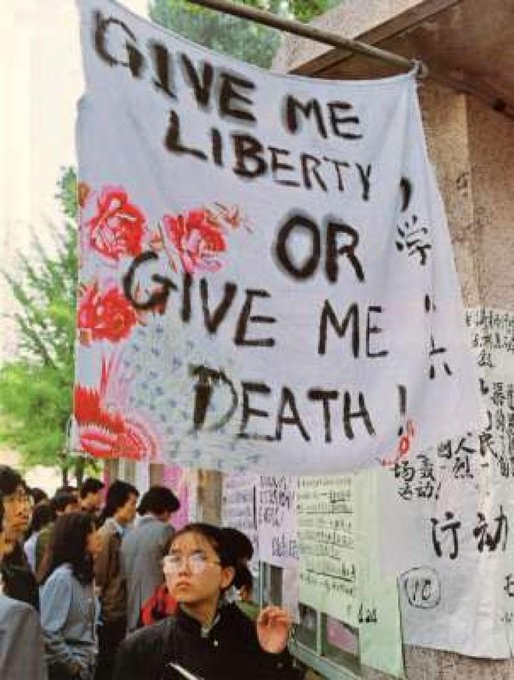
April 25, 1989 – New York Times: “China Bans Pro-Student Newspaper” http://nytimes.com/1989/04/25/world/china-bans-pro-student-newspaper.html…
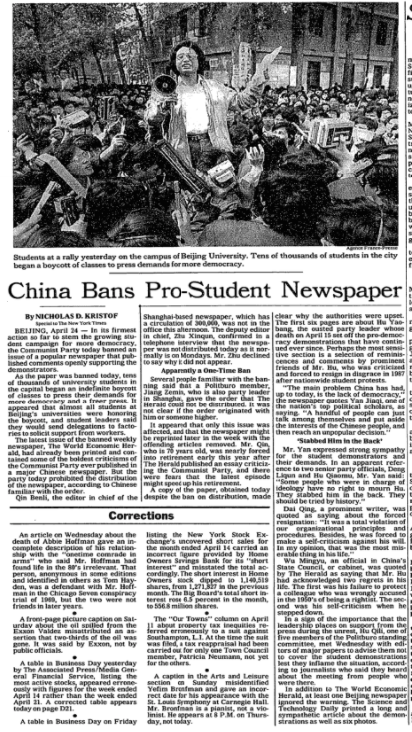
April 26, 1989 – Student leaders demand govt open dialogue or they will stage new march on Tiananmen the next day.
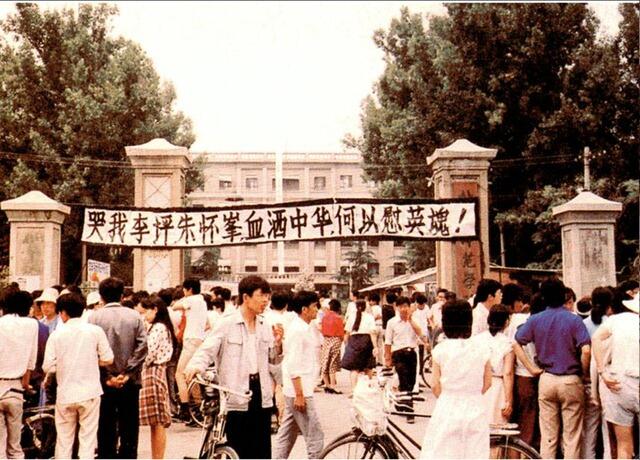
April 26, 1989 – People’s Daily publishes Deng Xiaoping’s speech condemning student protests as front-page editorial.
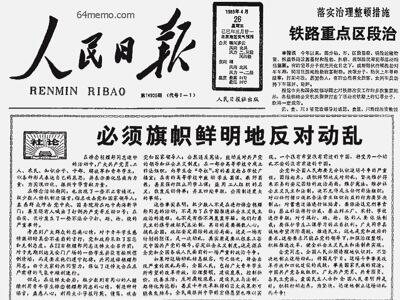
Chen Yizi, economic reform advisor to Zhao Ziyang: “The April 26 editorial was a bomb, and it exploded across every campus in the country.”
Yan Jiaqi, intellectual and former advisor to Zhao Ziyang: “Without the April 26 editorial and its conclusions, there would not have been the June 4 massacre.”
April 26, 1989 – State broadcasters warn next day’s planned march is illegal (inadvertently publicizing it).
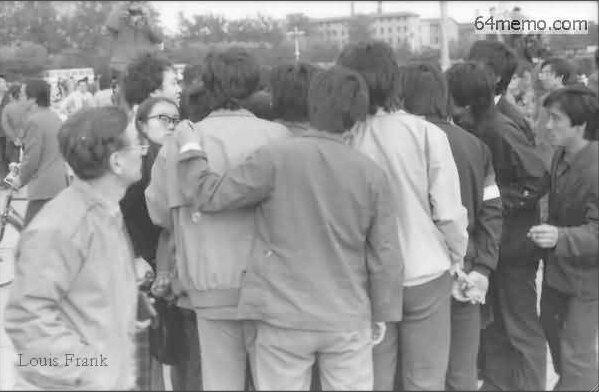
April 26, 1989 – Deng Xiaoping: “We are not afraid to shed a little blood…since this will not seriously harm China’s image in the world.”
April 27, 1989 – 150,000 students from 40 Beijing universities spill onto streets to protest People’s Daily editorial.
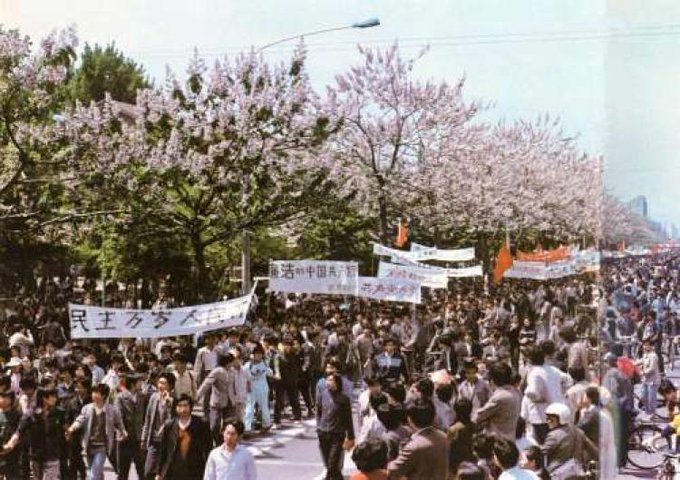
April 27, 1989 – Student protestors carry banners identifying their academic depts. or slogans like “Willing to Die!”
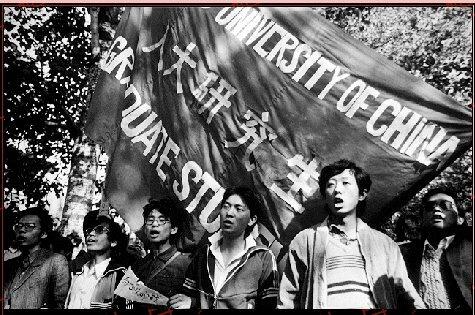
April 27, 1989 – Police are deployed to prevent protest march (declared illegal) from reaching Tiananmen Square.
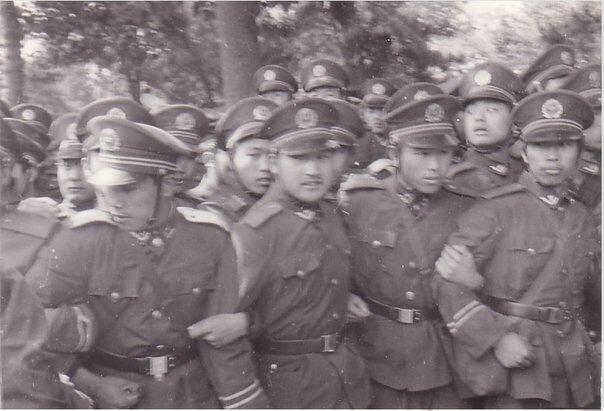
April 27, 1989 – Largest student protest yet fills the streets as it marches to Tiananmen Square.
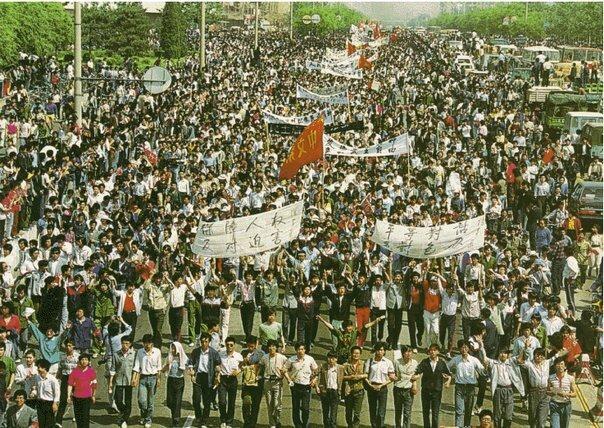
April 27, 1989 – Wall of police blocks way for crowds of student protestors marching on Tiananmen Square.
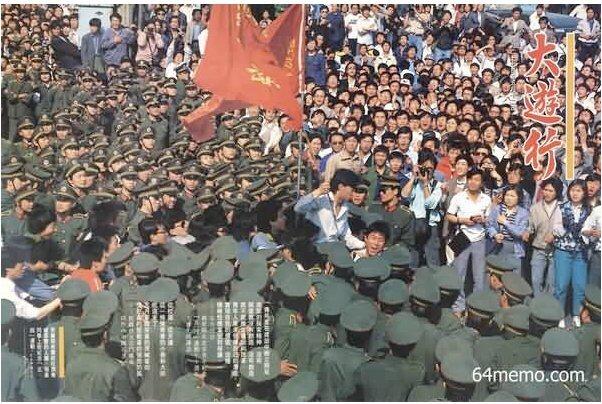
April 27, 1989 – Student leaders argue with police blocking march at Xidan & Chang’an intersection to let them pass.
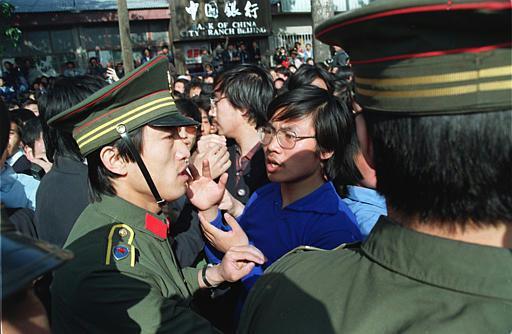
April 27, 1989 – Protestors surge past police wall by sheer force of numbers, and continue march to Tiananmen Square.
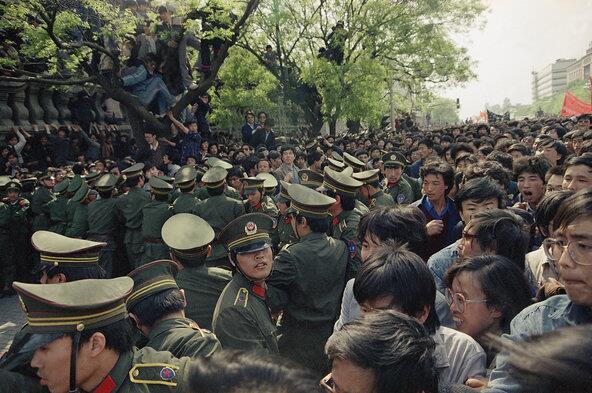
April 27, 1989 – Students form human chain along route to protect protestors marching on Tiananmen Square.
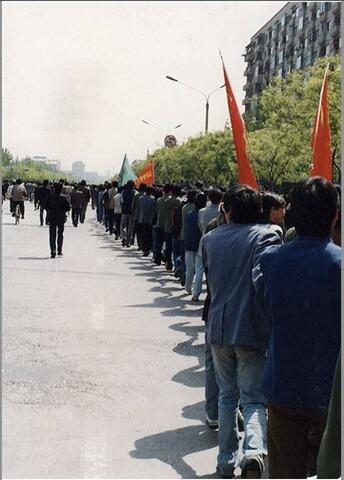
April 27, 1989 – 500 troops from 38th Group Army are deployed outside Great Hall of the People.
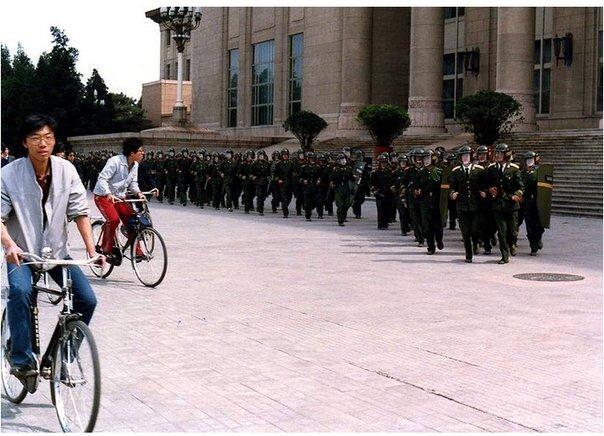
April 27, 1989 – Student protestors fill Tiananmen Square, which police had tried to prevent them from reaching.
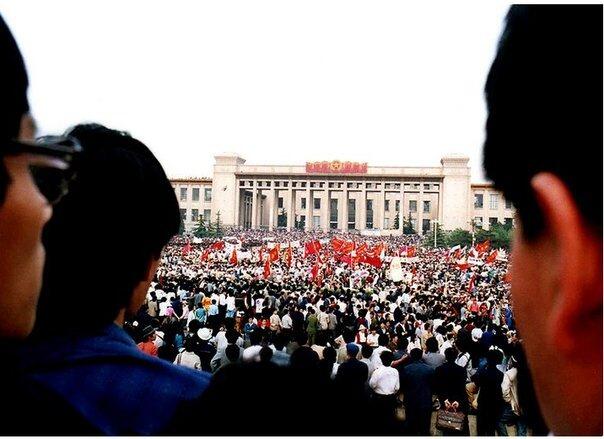
April 28, 1989 – New York Times reports on previous day’s protest march to Tiananmen Square. “Huge Beijing rally defies the regime”.
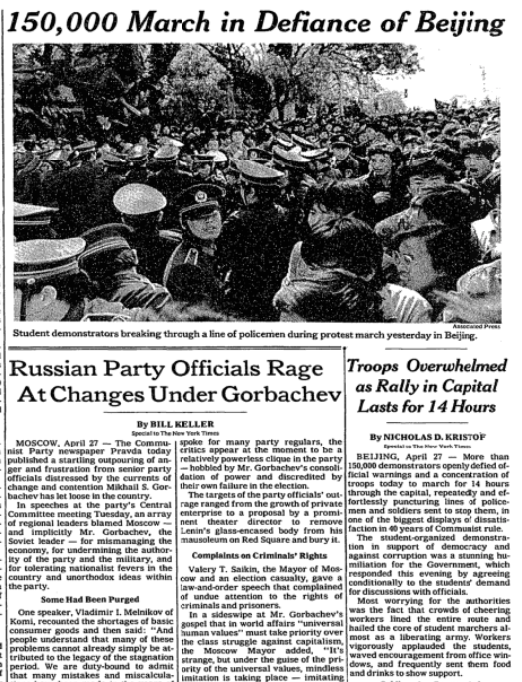
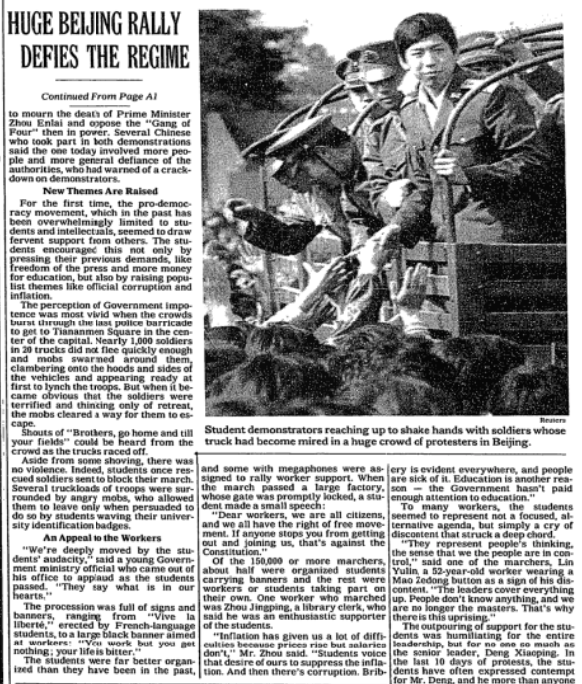
April 28, 1989 – Beida student recounts prior day’s march to Tiananmen Square, amid worries about govt’s response.
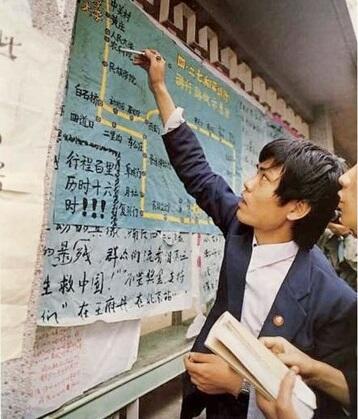
April 28, 1989 – Student tells New York Times: “So many students are struggling with the idea of what it means to have democratic rights.”
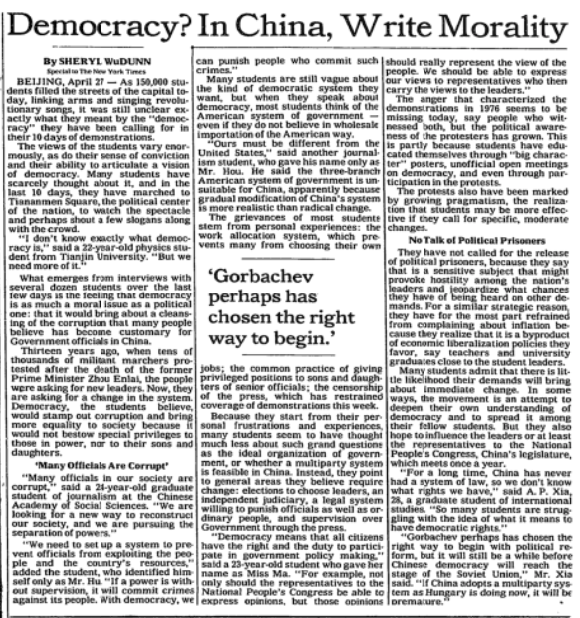
April 28, 1989 – Student tells New York Times: “If China adopts a multiparty system as Hungary is doing now, it will be premature.”
April 28, 1989 – Chinese student tells New York Times: “I don’t know exactly what democracy is. But we need more of it.”
April 28, 1989 – Student tells New York Times: “Democracy means that all citizens have the right and the duty to participate in government policy making.”
April 28, 1989 – Student tells New York Times: “Many officials in our society are corrupt…we are pursuing the separation of powers.”
April 28, 1989 – Chinese student tells New York Times: “Our [form of democracy] must be different from the United States.”
April 28, 1989 – Chinese student tells New York Times: “Many officials in our society are corrupt … we are pursuing the separation of powers.”
April 28, 1989 – Chinese student tells New York Times: “So many students are struggling with the idea of what it means to have democratic rights.”
April 28, 1989 – Students hold press conference at Peking University, release letter signed by professors asking government not to use force.
April 28, 1989 – Chinese government agrees to hold dialogue with students; Wall Street Journal reports: “Chinese Students Win Concession After a Massive March in Beijing”
April 29, 1989 – Chinese officials hold televised dialogue with government-selected student representatives, end up lecturing them.
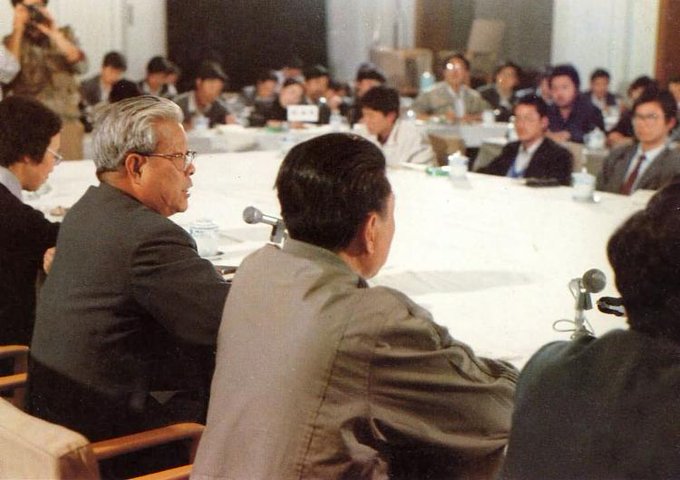
April 29, 1989 – Big character posters at Peking University denounce government’s staged dialogue with students as a sham.
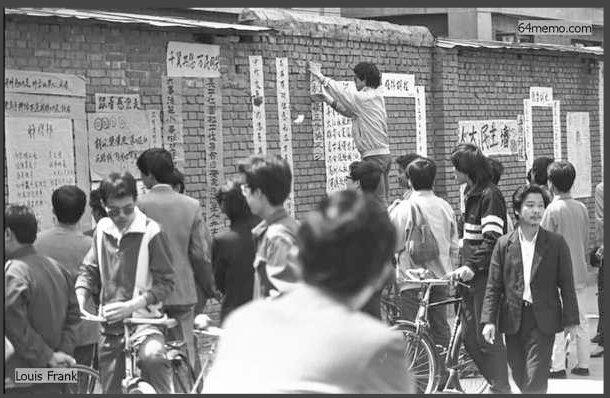
April 29, 1989 – Big character posters at Peking University exhort students to continue class boycott “to the end”.
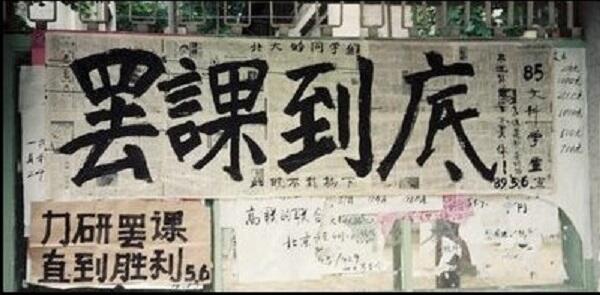
April 30, 1989 – New York Times: China hears out students, lets millions listen.

April 30, 1989 – Beijing campuses are relatively calm as students plan new protests for historic May 4th anniversary.
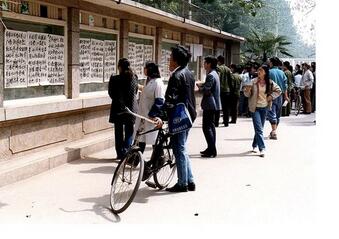
April 30, 1989 – Zhao Ziyang returns from North Korea and orders Politburo Standing Committee to meet the next day.
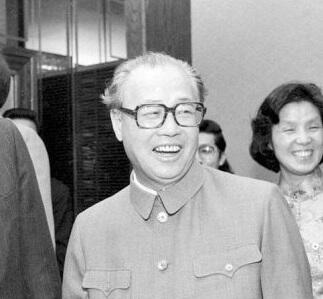
April 30, 1989 – New York Times: “Dynasty Defied: China’s Leaders Hear the Roar of the Crowd”
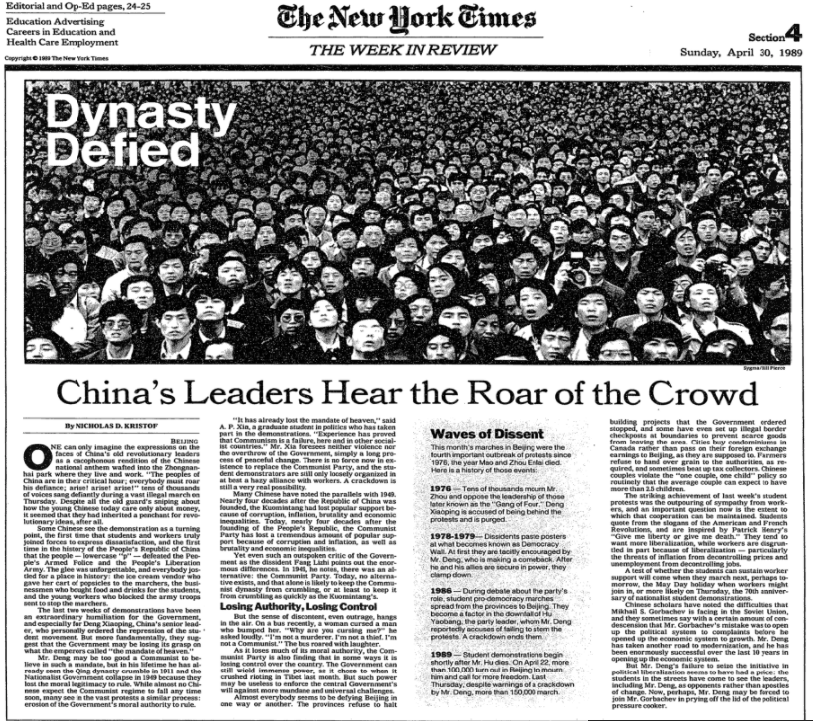
April 30, 1989 – Student tells New York Times: “Experience has proved that Communism is a failure, here and in other socialist countries.”
April 30, 1989 – Chinese student tells New York Times: “We called on Li Peng to come out. Why can’t the people’s Prime Minister meet the people?”
April 30, 1989: Student tells New York Times: “It [the Chinese government] has already lost the mandate of heaven.”
May 1, 1989 – Protest leader Wang Dan addresses foreign journalists at Peking University.
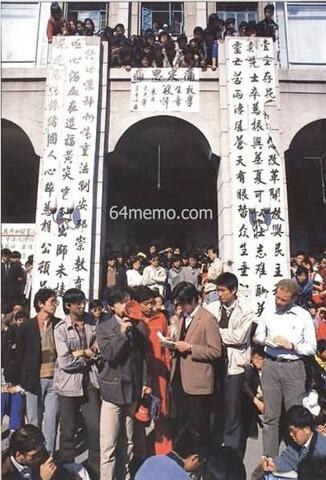
May 1, 1989 – Protest leaders demand govt open more genuine dialogue or students will march again on Tiananmen Square.
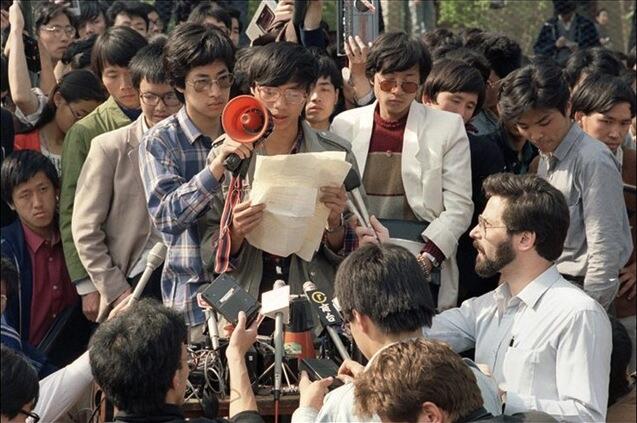
May 1, 1989 – Students demand that Mao’s body should be removed from its Tiananmen Square Mausoleum and buried in Babaoshan Cemetery.
May 1, 1989 – Students demand that China’s top leaders should move out of Zhongnanhai and turn it into a park.
May 1, 1989 – Zhao Ziyang convenes Politburo Standing Committee to analyze the student movement and discuss strategy.
May 1, 1989 – Zhao Ziyang tells party’s Politburo Standing Committee: “Times have changed, and so have people’s ideological views. Democracy is a worldwide trend.”
May 1, 1989 – Zhao Ziyang: “Our Party must adapt to new times & new situations and learn how to use democracy & law to solve new problems.”
May 1, 1989 – New York Times reports that China’s protestors struggle to get organized.
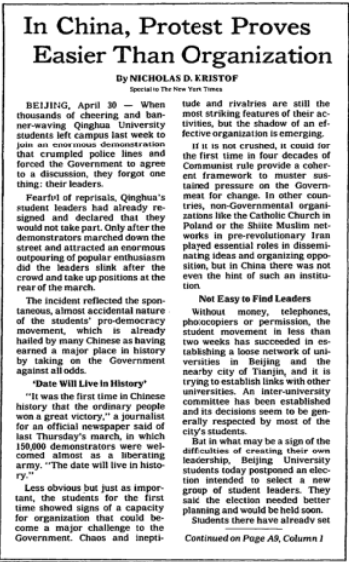
May 1, 1989 – Zhao Ziyang: “Reform of any kind has to be based on social stability…If stability is lost, then we lose everything.”
May 1, 1989 – Li Peng: “If they get their way, then everything…will vanish into thin air and China will take a huge leap backward.”
May 1, 1989 – Li Peng: “Leaders of illegal student organizations are plotting even bigger activities…They spread all kinds of rumors.”
May 1, 1989 – Zhao: “student slogans that uphold Constitution, promote democracy, & oppose corruption all echo positions of Party and government”
May 1, 1989 – Li Peng: “Our first order of business should be stability. Once that is achieved, we can talk about reforming the political system.”
May 2, 1989 – Hungarian soldiers dismantle Cold War wire border fence with Austria – a series of events that will ultimately culminate in the fall of the Berlin Wall in a few month’s time.
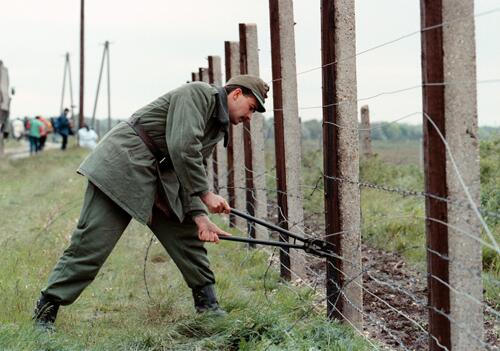
May 2, 1989 – Peking University students mimeograph petition demanding government open more genuine dialogue with them.
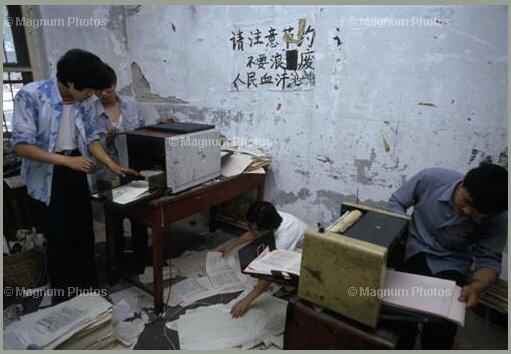
May 2, 1989 – New York Times reports Beijing students meeting with students from other cities to coordinate protests.
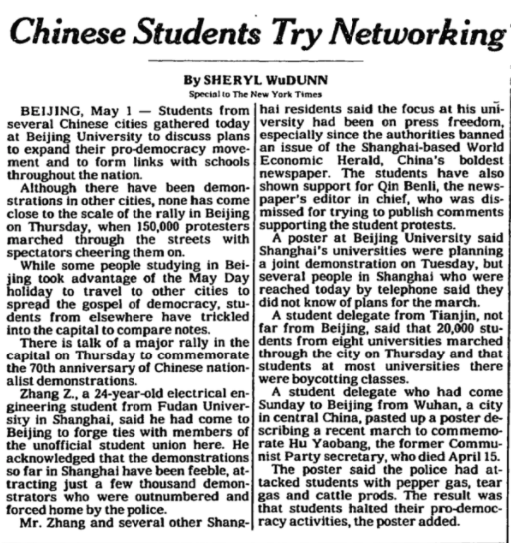
May 3, 1989 – Student prepares big character poster in university dorm in Beijing.
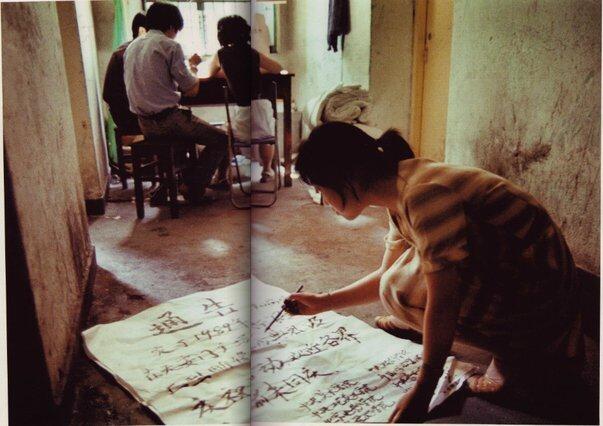
May 3, 1989 – Posters at university campus in Beijing reflect political ferment among students.
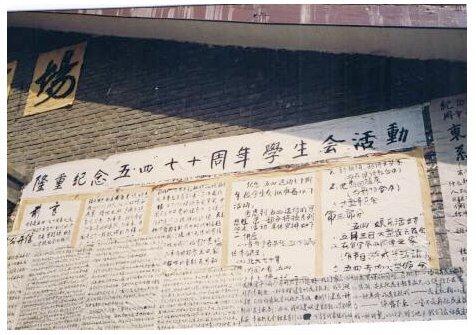
May 3, 1989 – Students gather below big character posters in Beijing, preparing for planned march the next day.
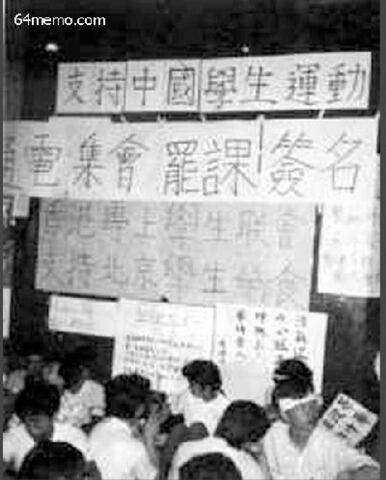
May 3, 1989 – Government spokesman Yuan Mu publicly rejects student demands on dialogue, setting stage for renewed protests.
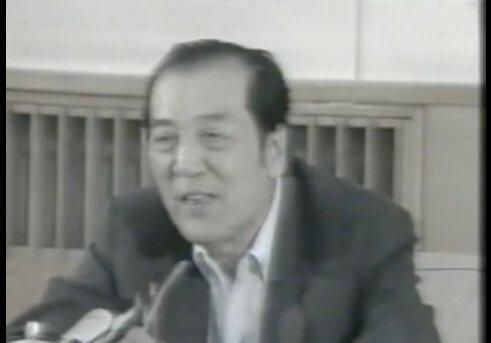
May 3, 1989 – New York Times reports 6,000 students hold pro-democracy march in Shanghai.
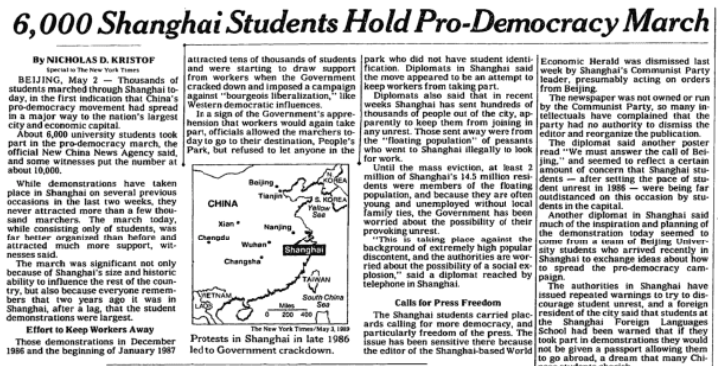
May 3, 1989 – New York Times quotes diplomat “[Shanghai] authorities are worried about the possibility of a social explosion”
May 3, 1989 – Student demonstrations reported taking place in Nanchang and Xining.
May 3, 1989 – New York Times reports Chinese intellectuals attending US conference outspoken in support of protests.
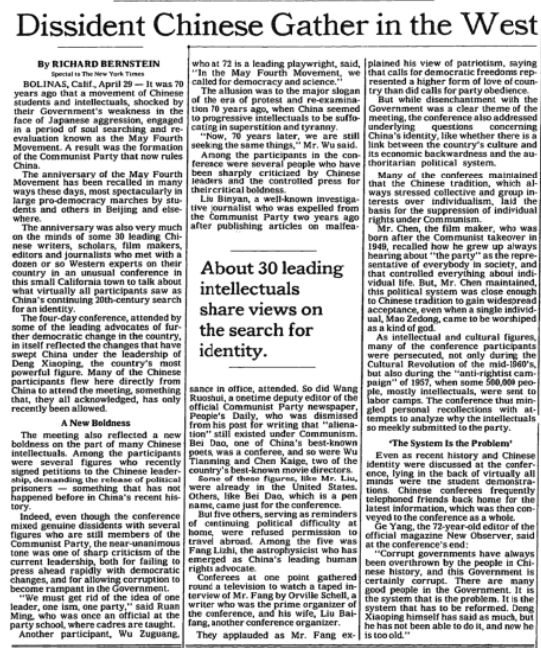
May 4, 1989 – Students at Beijing Normal University begin protest march, singing “Seize the hour! China, wake up!”
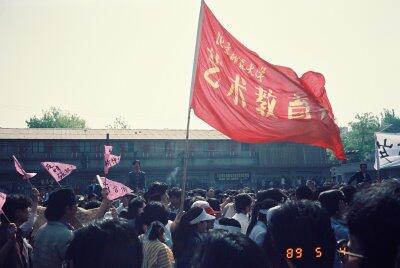
Students on May 4, 1989 were inspired by earlier generation of students who participated in May 4th Movement of 1919.
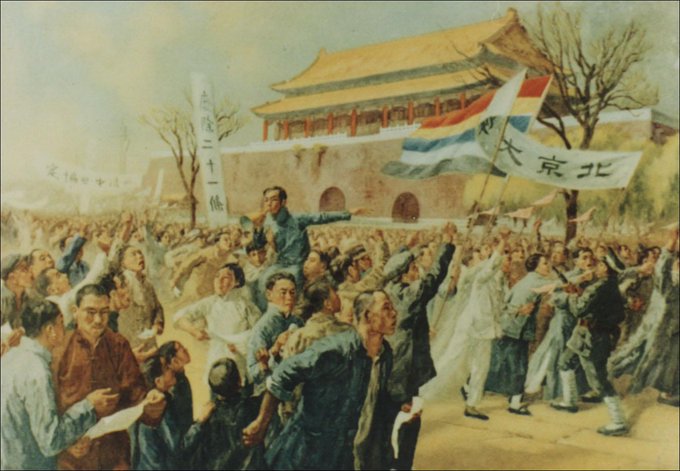
The May 4th Movement of 1919 was seen as critical moment in China’s modern awakening. May 4, 1989 was 70th anniversary.
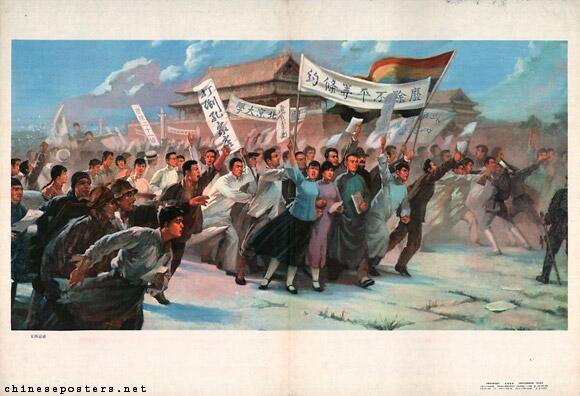
May 4, 1989 – Student protestors in Beijing fill the streets on their way to Tiananmen Square.
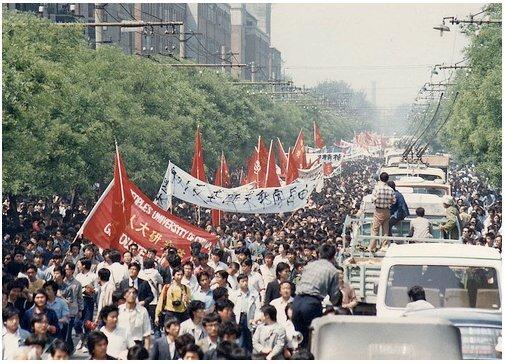
May 4, 1989 – Monks join Beijing protestors, chanting “Buddhism supports Democracy” and “Long Live Freedom of Belief”.
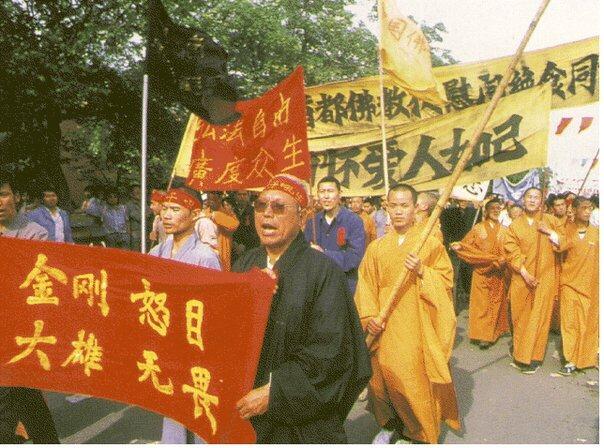
May 4, 1989 – Sea of student protestors attract onlookers as they march through Beijing to Tiananmen Square.
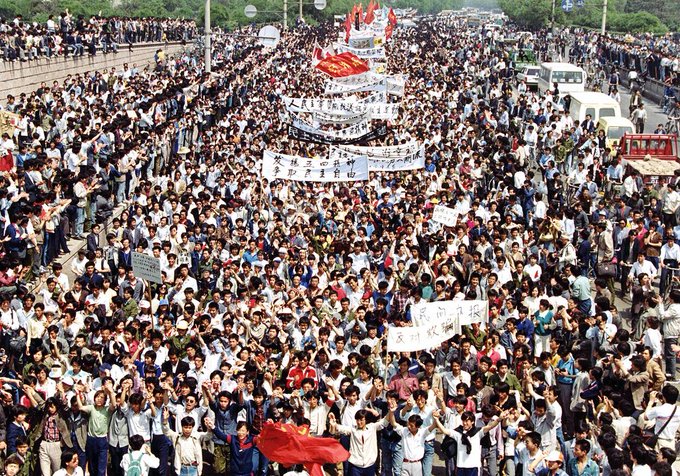
May 4, 1989 – New York Times: “Beijing Rejects Deadline for Talks And Students March in Defiance”
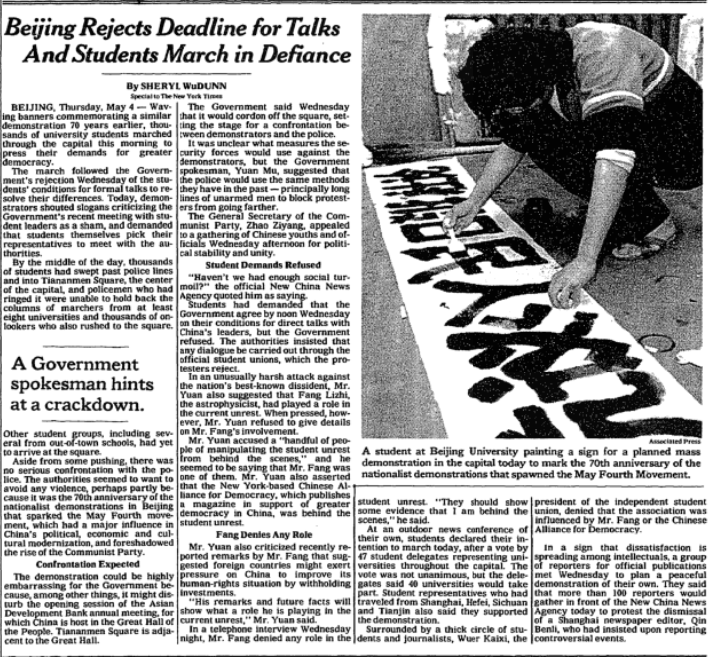
May 4, 1989 – Students gather on Shanghai’s Fudan University campus to begin pro-democracy march.
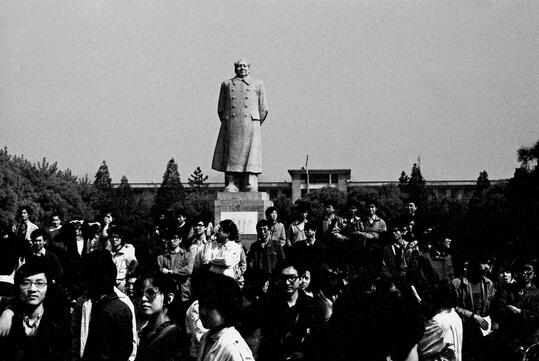
May 4, 1989 – Students gathering at Shanghai’s Fudan University carry memorial to Hu Yaobang.
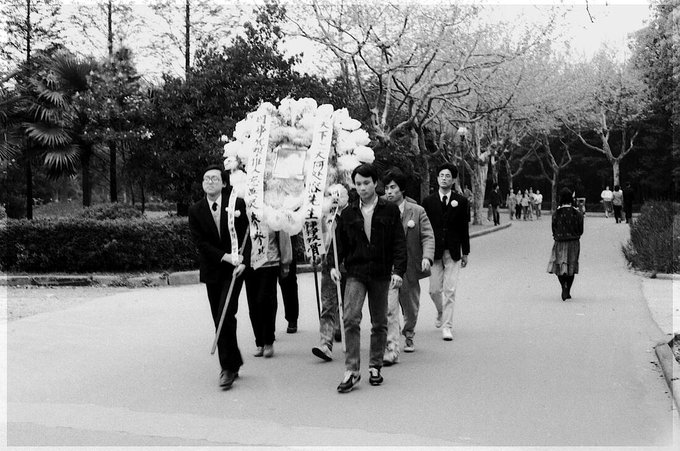
May 4, 1989 – Students pose at Shanghai’s Fudan University. Banner says “Long Live Freedom and Democracy”.
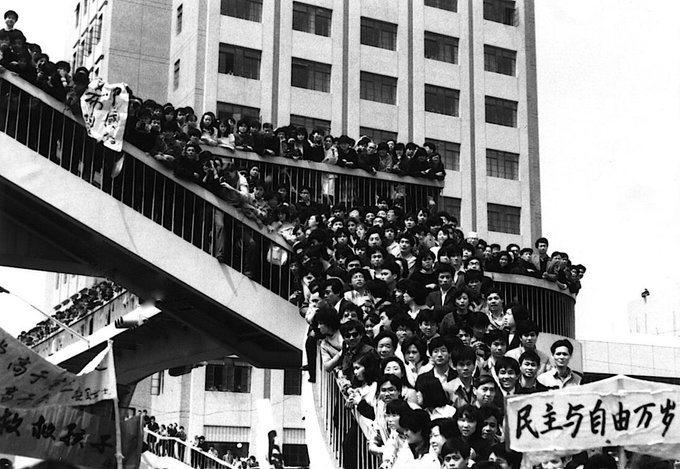
May 4, 1989 – Memorial to Hu Yaobang left in Fudan University classroom, empty due to student strike.
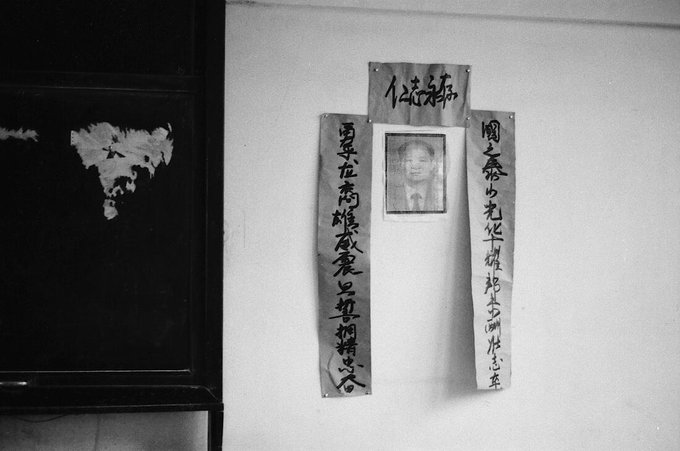
May 4, 1989 – Beijing police make half-hearted attempt to restraint mass of protestors heading to Tiananmen Square
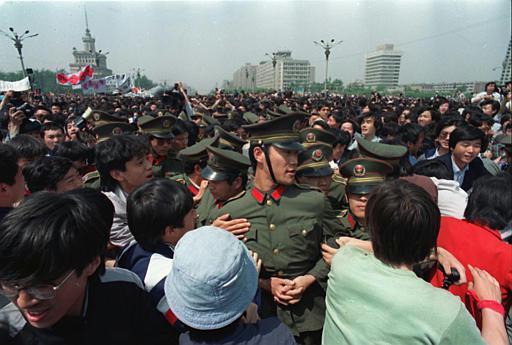
May 4, 1989 – Student protestors in Beijing surge past police and continue their way to Tiananmen Square.
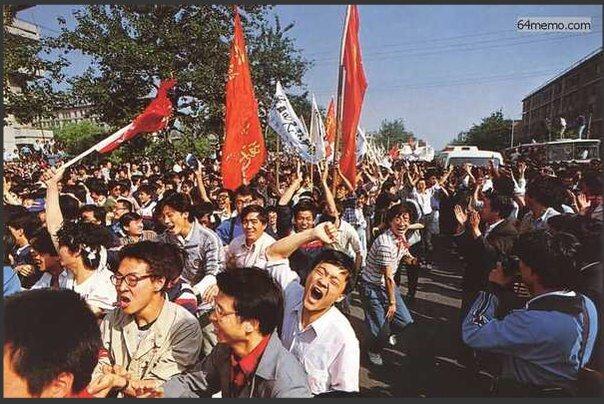
May 4, 1989 – Chinese factory worker tell New York Times: “The government can’t crack down on us because 90% of the population supports the students”.
May 4, 1989 – At noon, first column of student protestors enters Tiananmen Square
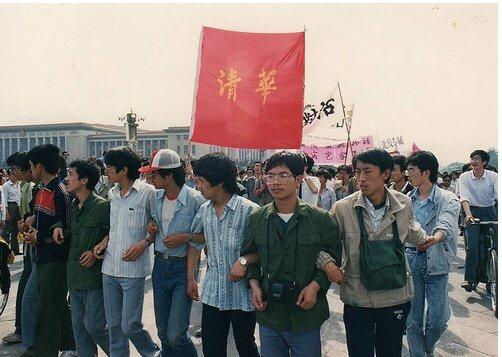
May 4, 1989 – Chinese factory worker tells New York Times: “A corrupt country calls for help. Its end is near.”
May 4, 1989 – An overwhelming sea of pro-democracy student protestors fills Beijing’s Tiananmen Square
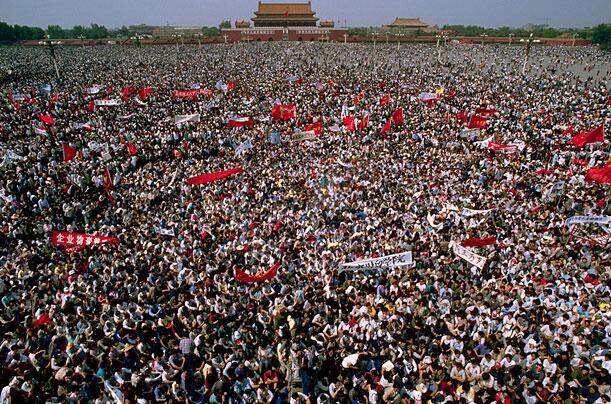
May 4, 1989 – Students holding banner in Beijing’s Tiananmen Square: “Hello Mr. Democracy”.
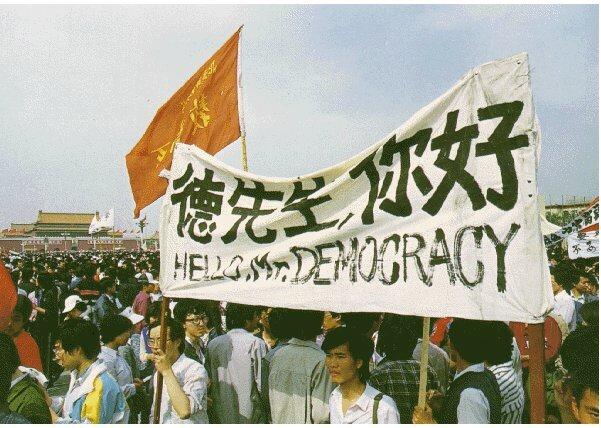
May 4, 1989 – Chinese iron worker tells New York Times: “I hope student demonstrations will make the government do something about inflation”.
May 4, 1989 – Student protestors cross Waibaidu Bridge in Shanghai. Banner reads “Patriotism is not a crime.”
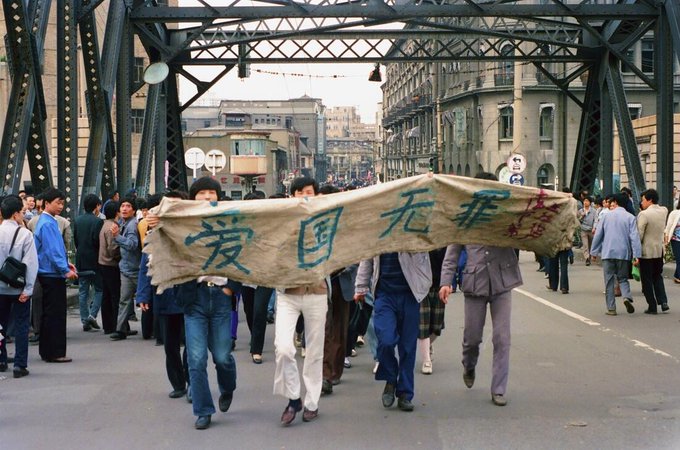
May 4, 1989 – Demonstrators converge on People’s Square in the middle of Shanghai.
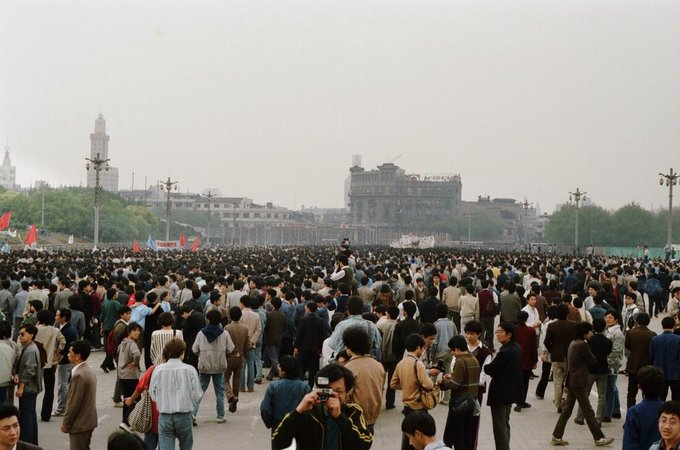
May 4, 1989 – New York Times reports other student protests took place in Changchun, Dalian, Changsha, Nanjing, Wuhan and Xi’an
May 4, 1989 – New York Times reports students in Shenyang and Harbin were locked into their campuses to prevent planned protests.
May 4, 1989 – “The atmosphere in the demonstrations [in Shanghai’s People’s Square] was both incredulous and joyous”.
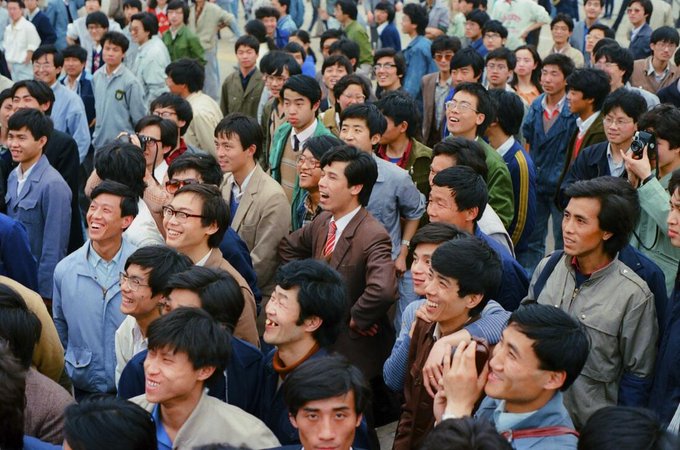
May 4, 1989 – Elderly veteran of original May 4th Movement rallies student protestors in Shanghai.
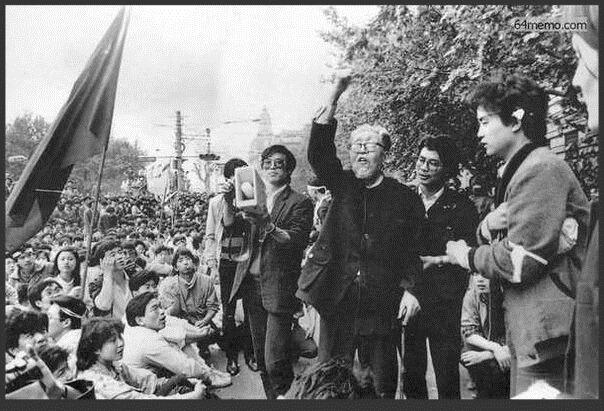
May 4, 1989 – Student protestors carry replica of the Statue of Liberty through streets of Shanghai.
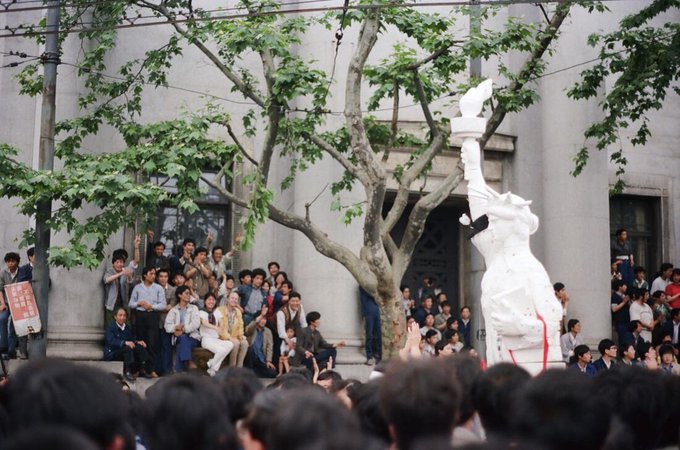
May 4, 1989 – Students in Shanghai read manifesto demanding dialogue with local Party boss Jiang Zemin.
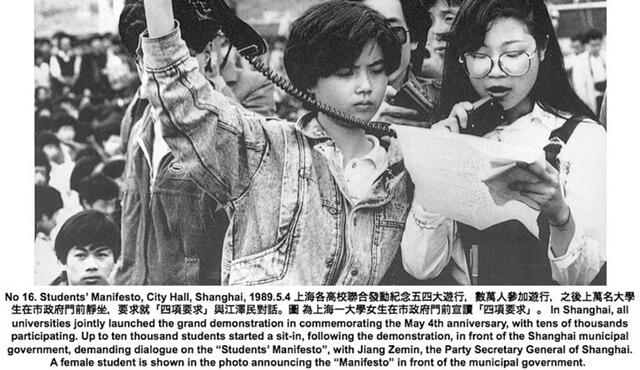
May 4, 1989 – Protestors had out flyers supporting reform in Shanghai.
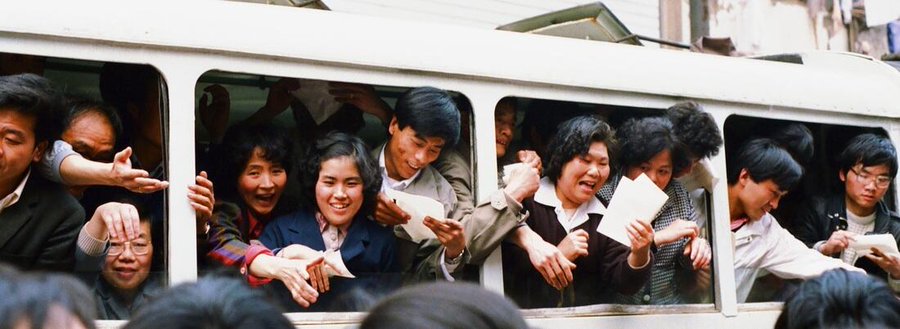
May 4, 1989 – Police mobilized in Shanghai looked on warily, but did not interfere with the day’s protest.
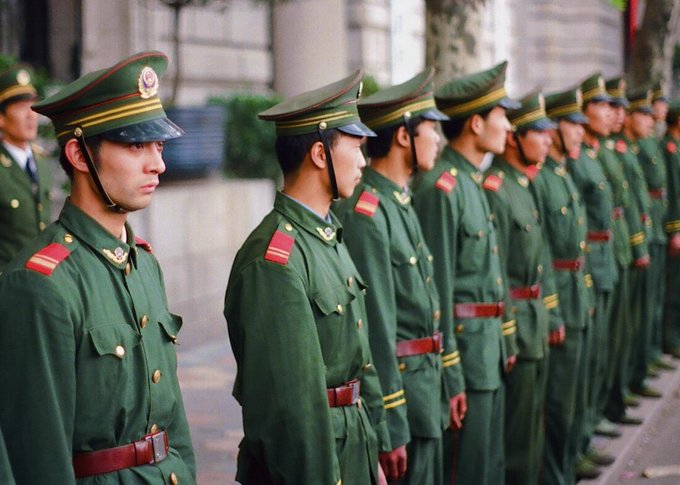
May 4, 1989 – Students from the Central Academy of Drama in Beijing’s Tiananmen Square.
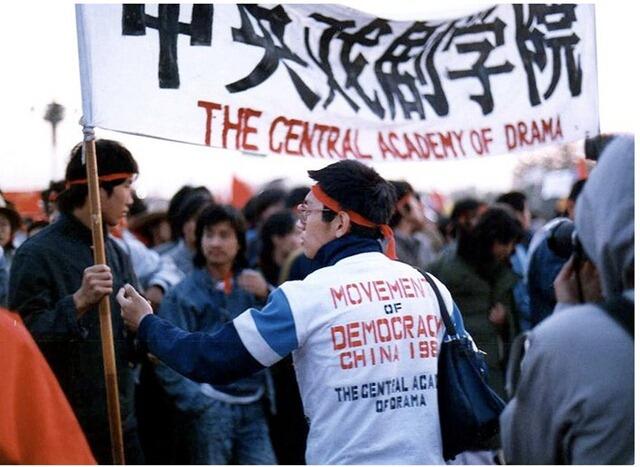
May 4, 1989 – Zhao Ziyang welcomes delegates attending at meeting of the Asian Development Bank at the Great Hall of the People, on Tiananmen Square : “All of you who have come to China probably know that recently some students have taken to the streets.”
May 4, 1989 – Zhao Ziyang to Asian Development Bank (ADB): “I firmly believe that the situation will gradually quiet down. China will not sink into turmoil.”
May 4, 1989 – Zhao Ziyang to ADB: “What is most needed now…is soberness, reason, restraint, and order.”
May 4, 1989 – Zhao Ziyang: “They want us to correct our mistakes and improve our work, which [is] the stand of the Party and government as well.”
May 4, 1989: Zhao Ziyang: “We should solve [these questions] through rule of democracy and law … through reform and in a reasonably & orderly way”.
May 4, 1989 – With Zhao’s conciliatory speech, many believed protests reached successful conclusion, wld now recede.
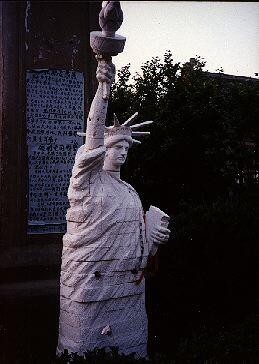
But the protests were just beginning. The story continues here, in Part 2: Attempts at Reconciliation.
Leave a Reply